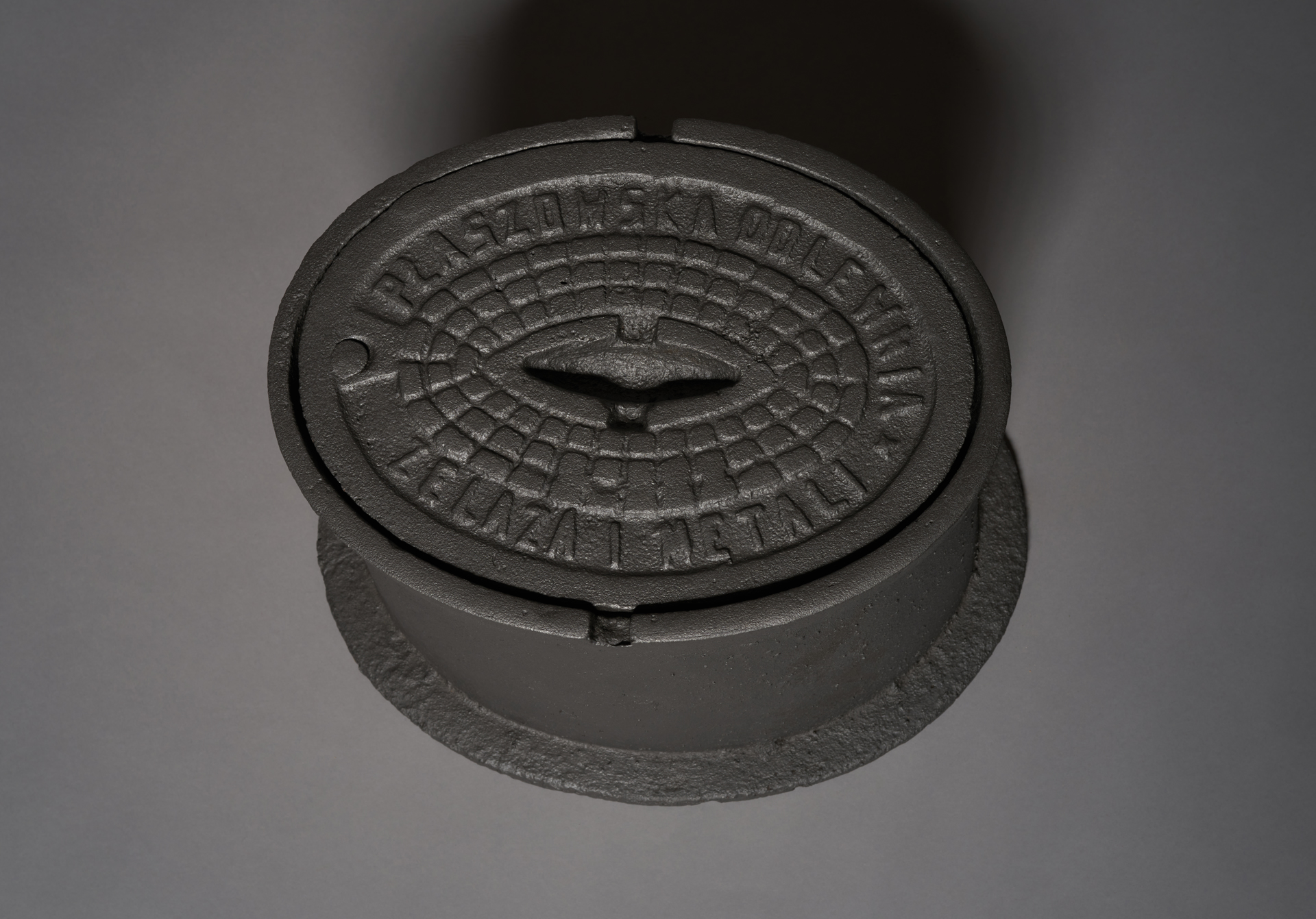
Underground hydrant street box, Płaszowska Odlewnia Żelaza i Metali
„Taubman” Płaszowska Odlewnia Żelaza i Metali, / 1900 - 1950Creator
„Taubman” Płaszowska Odlewnia Żelaza i Metali
Time and place of creation
Time:
1900 - 1950
Place:
Poland
A hydrant is a device that has been used in Europe and Asia since the 18th century to provide access to water directly from the mains supply. Its primary purpose is to provide water to firefighters in the event of fire, but it can also sometimes help cool down city dwellers on hot days, as was the case in 1896 in New York City. Hydrants can be external (street hydrants) or internal (used in buildings). The latter come as boxes with a wound hose and a valve connected to the mains water inside the building. An external hydrant always has a cut-off valve and an outlet that allows a receiving hose to be connected, usually via a quick-release or Storz connector. Street hydrants are also divided into above-ground designs, in which the valve and outlet are fully raised above street level (this type is often used in the United States), and underground hydrants that are enclosed in a metal box, with the connector and valve installed inside, and protected by a cover placed flush with the surface. In principle, underground hydrants are installed in locations where there is a risk of water freezing in the above-ground parts of the device.
The cast iron hydrant box presented here was cast in Leopold Taubman’s Płaszowska Odlewnia Żelaza i Metali, situated in Kraków, on Wielicka street. This entrepreneur was also the owner of the Fabryka Gipsu Płaszów gypsum factory.
Interesting fact: The abrupt closing of a hydrant can cause the “water hammer” effect to occur in the water supply network, which can damage pipes and connected devices. The effect is caused by a sudden increase in pressure due to a sudden stopping of the water flow.
References:
Pipes – Wood, Page “The History of Sanitary Sewers”, http://www.sewerhistory.org/photosgraphics/pipes-wood/ (Accessed: 7.05.2021).
Spis abonentów Państwowej Sieci Telefonicznej Okręgu Krakowskiego Dyrekcji Poczt i Telegrafów wraz z siecią P. A. S. T. w Zagłębiu Dąbrowskiem. Według stanu z dnia 1 stycznia 1929, Kraków 1929, a scan of the publication is available at: http://www.mtg-malopolska.org.pl/images/skany/telefon_1929/telefon_1929.pdf (Accessed: 7.05.2021).
Underground hydrant street box, Płaszowska Odlewnia Żelaza i Metali
„Taubman” Płaszowska Odlewnia Żelaza i Metali, / 1900 - 1950Creator
„Taubman” Płaszowska Odlewnia Żelaza i Metali
Time and place of creation
Time:
1900 - 1950
Place:
Poland











